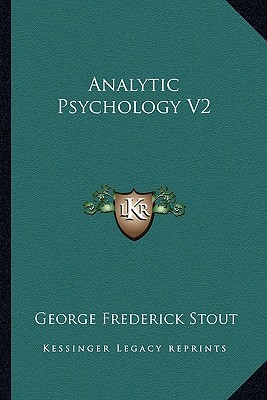| Analytic Psychology V2 Contributor(s): Stout, George Frederick (Author) |
|
 |
ISBN: 1162954035 ISBN-13: 9781162954035 Publisher: Kessinger Publishing OUR PRICE: $31.30 Product Type: Paperback - Other Formats Published: September 2010 |
| Additional Information |
| BISAC Categories: - Psychology | Movements - Jungian - Literary Collections - Psychology | Psychotherapy - General |
| Physical Information: 0.68" H x 6" W x 9" (0.96 lbs) 324 pages |
| Descriptions, Reviews, Etc. |
| Publisher Description: Purchase of this book includes free trial access to www.million-books.com where you can read more than a million books for free. This is an OCR edition with typos. Excerpt from book: sarily follow that association plays no part in the development of simple perception. It may enter into the gradual process; of differentiation of a preformed disposition, which ultimately issues in perceptual consciousness. A possible mode in which this may take place is indicated by a general condition of distinction and identification, first formulated, I believe, by Lotze, and since very clearly expounded by Stumpf and James. This condition, as stated by James, is that " any total impression made on the mind must be unanalysable whose elements are never experienced apart."1 . . . " If all cold things were wet and all wet things cold, if all hard things pricked our skin and no other things did so; is it likely that we should discriminate between coldness and wetness, and hardness and pungency respectively?"2 "The converging of the eyeballs and the accommodation for near objects are, for each distance of the object (in the common use of the eyes), inseparably linked, and neither can (without a sort of artificial training . . . ) be felt by itself." 3 " The contraction of the diaphragm and the expansion of the lungs, the shortening of certain muscles and the rotation of certain joints, are examples"4 of an analogous kind. "The as- safcEtida in ' Worcestershire sauce' is not obvious to any one who has not tasted assafcetida per se. In a ' cold' colour an artist would never be able to analyse out the pervasive presence of blue, unless he had previously made acquaintance with the colour blue by itself." 5 Let us now consider the mode in which this principle may be supposed to operate. How is- it that the recurrence of the like impression in dissimilar contexts leads to identification ? Obviously, the presented content and its corresponding disposition must in some way undergo a modi... |